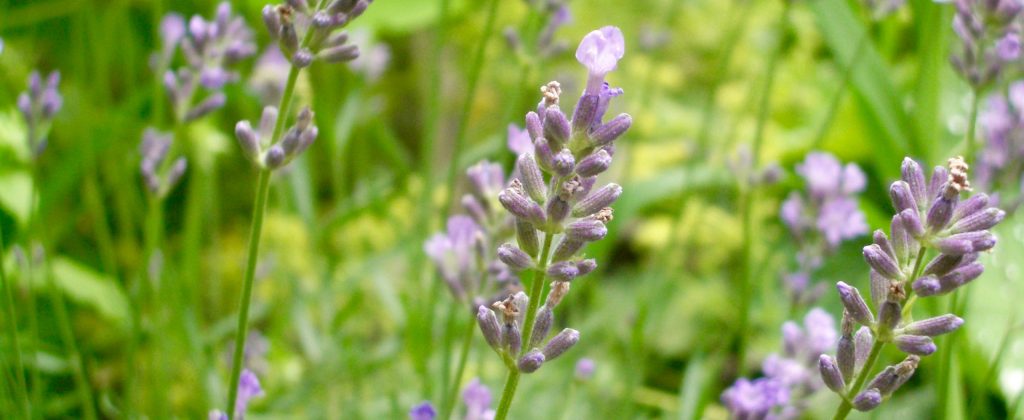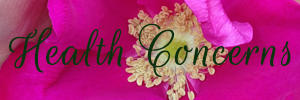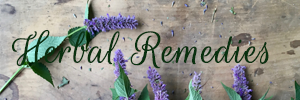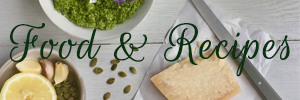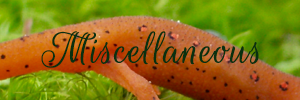Pros, Cons, Facts, Myths & Tips ~
What are Essential Oils?
Essential oils are highly concentrated aromatic plant extracts typically made by steam distillation, though expressed (citrus oil) and solvent-extracted with alcohol and/or hexane (“absolute” essential oils) are also available.[iii] Carbon dioxide (CO2) extracts pull more complex constituents and can be used similarly[iv]. Steam distilled essential oils are made in a closed still with plant matter suspended above water that passes through the plant material, releasing the volatile oils. The distilled water and volatile oils are cooled and condensed back into liquid form (a hydrosol), then the water is removed to make a pure essential oil. To make an essential oil at home, you would need a still and enormous quantities of plant matter, which make it impractical for most people.
Essential oils also only represent a specific set of constituents in the plants: aromatic volatile oils and associated compounds including terpenes, phenols, aldehydes, ketones, esters, ethers, and alcohols.[v] Volatile oils often have profound effects on the nervous system as well as pathogenic microbes. And while they will be vastly more potent than more standard herbal preparations like tea, powder, and tinctures, they will also lack the diversity of constituents including minerals, mucilage, and polysaccharides. Essential oils have many uses and applications but are not as diverse in their applications as crude herbs for this reason.
Potency
The exact amount of plant material required to make one ounce of essential oil varies plant to plant and batch to batch. Lavender, one of the easier essential oils to make, requires up to 16 pounds of flower buds (that’s a lot of little flowers!) to make just a 1-ounce bottle of finished essential oil[vi]! Rose, one of the most expensive essential oils, requires approximately 15 to 40 times more plant material than lavender to make the same amount of essential oil[vii][viii][ix]. While there’s no way to calculate it perfectly, various sources estimate that 1 drop of essential oil equates to 12 to 30 cups of tea in terms of potency for an average essential oil like peppermint or lavender[x]. The Tisserand Institute estimates that essential oils are 50 to 100 times more concentrated than the whole plant or standard herbal extract (like a tea or tincture).[xi]
There are some perks to this. As herbalist jim mcdonald points out, an aromatherapist can carry a few tiny vials with the medicine equivalency of an herbalist’s entire herb pantry. You’ll often also see fast and dramatic results with essential oils.
But, with great power comes great responsibility. (Yes, I’m quoting Spiderman.) This means that essential oils are not only vastly stronger medicinally than the crude herbs that we typically use in herbalism, but the safety risks and environmental impact associated with them are also greater.
Benefits of Essential Oils
Make no mistake: Essential oils don’t only smell nice, they can have profound benefits for human health. Nearly 1,000 human clinical studies can be found on the National Institutes of Health PubMed database[xii], with largely positive results.
Some of the areas in which they’re most impressive and useful include…
- Improving mood when inhaled or diluted and applied. For example, lavender has been shown to relax and ease anxiety in several studies. Rosemary shows cognition benefits in all ages including elders. And peppermint perks up mood and focus. Inhaling essential oil has immediate effects on the limbic system of the brain and our related emotions, which are also tied deeply to memory, explains clinical herbalist and certified clinical aromatherapist Erika Galentin, author of The Family Guide to Aromatherapy.
- Relieving pain when inhaled or diluted and applied. For example, several studies show lavender eases pain associated with surgery and other medical procedures. Peppermint acts as an antispasmodic on contact for headaches, irritable bowel syndrome, and neck tension.
- Fighting infections short-term, especially difficult-to-treat infections like antibiotic-resistant staph (MRSA) [xiii] and small intestinal bacterial overgrowth[xiv]. They benefit here in being vastly more potent than crude herbs yet more complex and difficult for microbes to become more resistant to compared to antibiotics. Often the essential oils are diluted and ingested or applied in low doses, but in one remarkable study, diffusing a combination of lemongrass and geranium essential oils (which are not the ones we tend to think about for infections) for 15 hours dropped surface and airborne levels of MRSA and other antibiotic-resistant bacteria by 89 percent![xv] Popular antimicrobial essential oils include oregano and thyme.
Essential oils can also be used simply for their pleasing aroma to the air and body care products and to add scent and efficacy to cleaning supplies. Although every essential oil has potential safety risks in addition to its benefits (especially if undiluted or ingested), they are an ideal alternative to synthetic fragrances which have known endocrine-disrupting, carcinogenic, and neurotoxic effects without any health perks.[xvi]
Concerns and Considerations About Essential Oils
Safety
Not only are essential oils inherently more medicinally potent than crude herbal preparations, but they also pose greater safety risks, especially if they are misused or overused, and in sensitive populations.
“Anything that has a meaningful positive effect has the potential for a negative effect. Risk is linked to potency,” explains Robert Tisserand, lifelong essential oil educator, industry consultant, and co-author of Essential Oil Safety, the foremost resource on the topic. And, as mentioned, essential oils are potent.
The Tisserand Institute maintains a database of human case reports of adverse reactions. Common reactions include allergy, contact dermatitis (especially if undiluted), and anaphylaxis.[xvii] I’ve personally witnessed people with an acute worsening of pre-existing tremors from inhalation as well as gastric irritation from ingesting “spirit of peppermint,” which is the diluted essential oil. In herb school, a classmate had a preexisting seizure disorder that would result in one seizure per month. During and shortly after an aromatherapy class, from inhalation only, she had a seizure every half hour for the rest of the day.
Safety risks vary by specific essential oil, dose, application, and personal sensitivity. The greatest risks occur when they’re ingested, particularly long-term (gastric irritation, microbiome disruption[xviii], possibly kidney and liver toxicity[xix]) or in accidental acute amounts (such as children opening and drinking a bottle, which can be lethal), as well as undiluted on the skin (causing dermatitis, photosensitive reactions in combination with the sun, and chemical burns).[xx] Children (especially infants), pregnant women, and animals (particularly cats and birds) are most sensitive to the adverse effects of essential oils.
Rare but real risks exist even from topical use. A teen athlete died of methyl salicylate toxicity after applying excessive amounts of BENGAY – which is considered safe when used appropriately – and related products to her skin[xxi]. A small study on boys with unexplained prepubescent breast tissue growth suggested topical lotions, shampoo, and soap scented with lavender and tea tree products to be the cause, with lab studies confirming weak pro-estrogenic and anti-androgen (male hormone) effects of the essential oils.[xxii] However, experts including Tisserand call into question the scientific validity of this study; it’s likely that petroleum-based synthetic fragrances and leached plastic were at fault[xxiii].
Methyl salicylate, the pain-relieving, wintergreen-y smelling primary constituent in birch and wintergreen essential oil, is incredibly toxic when consumed. Just 4 ml (about one teaspoon) can kill a child,[xxiv] but the death of a teen from topical use was surprising. Inhalation of peppermint, menthol, camphor, and eucalyptus essential oils – particularly in less dilute formats – has caused life-threatening breathing complications in some young, sensitive children.[xxv]
Adulteration is a Big Problem
Beyond contamination issues, approximately 80 percent of all essential oils sold are adulterated[xxvi]. Adulterants include spiking with isolated natural or synthetic components, undisclosed dilution with carrier oils, or cheaper but similar smelling essential oils[xxvii]. The industry can be sinister and intentional to cut costs and meet demand, adept at tricking identity tests. Essential oils can also be contaminated with pesticides, herbicides, solvents, and plastic-related phthalates that are also extracted from the plant material or during processing[xxviii].
No Brand Is Immune to Safety Risks
Companies and sales representatives of popular companies, particularly multi-level marketers with aggressive “education” on the benefits and usage of their product often claim that safety concerns are not a not a concern with their products because they are pure and better quality. But, this isn’t actually the case, echo many of the international aromatherapy experts I consulted. Although adulterants are a concern, the vast majority of safety concerns revolve around the pure essential oils and their constituents themselves.
“Risk is very rarely about adulterants – it’s about the natural constituents of the oil. We have seen many adverse reactions from the same brands that propagate this myth,” said Tisserand.
Sustainability Concerns
As mentioned, essential oils are made from a massive quantity of plant material compared to standard herbal products, and their use has risen sharply in the United States and globally. This means essential oils have a significant ecological impact and carbon footprint on the planet. Wildcrafted plants as well as crops raised non-organically with the use of chemical herbicides and pesticides pose the greatest damage.
In 2017, a federal judge ruled Young Living, a popular multilevel marketing company, guilty of illegal trafficking of rosewood and spikenard essential oils in violation of the Lacey and Endangered Species Acts[xxix], but it’s not the only company with questionable harvesting ethics. Palo santo[xxx], white sage[xxxi], and sandalwood[xxxii] are popular essential oils that are often unethically wildcrafted and illegally poached from sensitive or protected stands. Many essential oil crops are also harvested or cultivated in developing nations where workers may have low pay and poor working conditions.
That said, prudent consumers can have a positive impact by opting for organic, fair-trade, and sustainably cultivated essential oil. Some producers have switched to more sustainable species and methods of sandalwood cultivation. Even still, most essential oil crops will be monocropped and require significant inputs due to economics and scale required to meet the demand. And companies can claim to be “ethically sourced” or “ethically wildcrafted” without consumers knowing how true that really is. No company will identify themselves as “unethical,” but you can see how open, transparent, and able they are to answer pointed questions.
Tips for Using Essential Oils Safety, Effectively, and Wisely
So, essential oils are amazing and potent yet challenging. How can we use them in a safe, smart, ecologically minded way?
Source Carefully: See “Buying Tips” for more details.
Use Them Judiciously: Because essential oils are potent, you really don’t need much to get an effect. Low and infrequent doses as well as short-term use often work fantastically, help preserve our precious resources, and are the safest and most affordable ways to use essential oils. Don’t forget that you also have a whole world of crude herbal remedies at your disposal that are also often quite effective. Hydrosols are also a lovely way to enjoy essential oil aromatherapy in a lighter, safer, lower-impact way.
“Personally, I like to use herbs for chronic diseases,” says Inga Wieser, master herbalist, aromatherapist, and president of the Alliance of International Aromatherapists. “But if I want to make a quick change or in acute issues, then I use essential oils. Especially in infections, essential oils are more effective and quicker because of their strength.”
Focus on Inhalation: Although it’s possible to overdo anything, the safest and yet extremely effective way to use essential oils for many uses is via inhalation, especially for uses associated with your nervous system and mood including uplifting, calming, cognition-enhancing, and even pain-relieving purposes. A quick whiff may suffice. The nerves have the greatest response in those first few seconds that you inhale the essential oil. Diffusing essential oils for long periods and especially on a daily basis is not necessary and may make you more prone to negative effects and sensitization to the oils (such as headaches, nervous irritation, nausea, and a worsening of any pre-existing neurological conditions like tremors or seizures). A two percent or lower dilution (see below) often works nicely for aromatherapy sprays.
Dilute for Topical Use: In spite of what many companies and their sales reps say, applying essential oils undiluted skin is almost never a good idea and can result in chemical burns, phototoxic sun rash, irritation, and rashes, and it also wastes precious essential oils. A 2 percent or lower dilution often works quite well and is the safest range for a low risk of adverse reactions for most oils. This equates to approximately 12[xxxiii] to 18[xxxiv] drops of essential oil per one ounce of carrier oil or lotion. Keep in mind that essential oils do not dissolve in water. Undiluted peppermint, bergamot, and carrot-family oils can be quite irritating. Cinnamon bark is not recommended topically, even if diluted, though diluted cinnamon leaf may be fine[xxxv].
Check out this nifty guide to dilution and dilution calculator by Mountain Rose Herbs.
Don’t Use Internally Without Professional Guidance: Experts at Tisserand Institute, National Association for Holistic Aromatherapy, and Alliance of International Aromatherapists all echo this warning. Regular, inappropriately dosed, and improperly diluted and administered use of essential oils internally poses the greatest risk for adverse effects, can damage the gut lining, disrupt the microbiome[xxxvi], and may increase the risk of liver and kidney toxicity over time. Using essential oils internally long-term is usually not necessary, and crude herbs are generally preferred.
“Using essential oils in your [drinking] water on a daily basis is a bad idea,” warns Wieser. “They don’t dissolve in water, and all the places those essential oils touch – your esophagus and intestinal lining – can create micro-burns.”
Be Careful with Sensitive Populations: Be particularly careful with children (especially infants), in pregnancy, and animals with essential oils. Certain essential oils are more and less suited for these populations, and lower dilutions preferred. Herb books such as Galentin’s The Family Guide to Aromatherapy will help guide you to the best options and applications. If you diffuse essential oils in the air, animals should have voluntary access to essential oil-free areas. Cats and birds are particularly sensitive to essential oils.
Educate Yourself: Approach essential oils the same way you approach herbalism, recommends Kelly Holland Azzaro, National Association for Holistic Aromatherapy (NAHA) Public Relations Director and Past President. “It is important to take time to learn about the individual essential oil profiles as one would do the same for herbology. As with herbs, essential oils offer a wide range of therapeutic benefits based on their chemical components and synergistic actions, and along with those components there are also certain safety cautions to follow. We would not randomly pick an herbal plant from our garden or in the woods and use it to make a balm, salve, or consume it in a tea or tincture; we would take time to learn about the plant, its actions and uses, and its safety cautions and contraindications, and if not, we would consult a professional herbalist. The same applies to aromatherapy and seeking out knowledge to empower oneself before purchasing and applying essential oils without any know-how.” See “Resources” for tips.
Buying Tips
Because most of the essential oils sold in the United States have been shown to be adulterated, it’s challenging for consumers to know which products to trust. This is a big challenge that is not easily solved. Look for companies who have their products tested for purity by third-party labs and are willing to share the results. You can also see the ConsumersAdvocate.org report on 11 top-selling brands including how they performed in third-party adulteration testing and their reputation for sustainability.
Beware of the term “therapeutic grade” as it doesn’t have any legal standing whatsoever and is entirely a self-created marketing ploy of essential oil manufacturers. Aromatherapist-recommended brands that have tested well in quality and purity from third-party labs include…
- Aromatics International (AI)[xxxvii]
- Pompeii Street Aromatherapy (formerly called Pompeii Organics)
- Hopewell Essential Oils
- Nature’s Gift
- Small-scale direct-from-the-farm organic distillers
- NAHA’s on line marketplace also lists reputable companies who offer essential oils tested by third-party labs: https://naha.org/marketplace/
Quality essential oils are inherently expensive due to the massive amount of plant material and effort required to create them. Don’t buy the cheapest essential oil you can buy, either. A $15 too-good-to-be-true bottle of rose essential oil in the department store is indeed too good to be true. Another red flag is a company that sells all of its essential oils for the same price per bottle.
Instead, use your essential oils sparingly. If budget is a concern, opt for essential oils that tend to be less expensive such as citrus, peppermint, and lavender. Get the smallest size bottle for what you need. Be aware that the most precious and expensive essential oils on the market include rose, neroli (orange blossom), chamomile, jasmine, and (surprisingly!) lemon balm. These can cost $500 to 1000 per ounce from reputable organic suppliers[xxxviii], though most people buy them in tiny bottles that hold just a few milliliters, which is still expensive. You can also opt for hydrosols, but keep in mind that they have a much shorter shelf life.
Find an Expert
“Someone who has five hours of training in essential oils and marketing is not a ‘trained aromatherapist,’” reminds Wieser. Be cautious of well-meaning “experts” associated with large essential oil companies that may or may not be well trained. The training they receive is often limited, skewed, and has the underlying motivation to sell products because the company itself is more interested in making money than your personal wellbeing. Search for a qualified aromatherapist at www.alliance-aromatherapists.org (which requires at least 200 hours of training at an approved school) or NAHA.org. If you’re considering working with a professional, find out what kind of training they’ve received in aromatherapy, including how many hours they’ve acquired of formal education.
Useful Resources
- Aromatherapy: A Complete Guide to the Healing Art, by Kathy Keville and Mindy Green. Written by two of the foremost respected herbalist-aromatherapists in the United States.
- The Family Guide to Aromatherapy by Erika Galentin. An approachable and even-keeled guide to the safe use of essential use at all ages, including lots of fun and simple recipes as well as individual plant essential oil profiles.
- Hydrosols by Suzanne Catty. An excellent exploration into the gentler, safer, and easier to make at home form of aromatherapy.
- Tisserand Institute tisserandinstitute.org For general information, particularly on safety, as well as training opportunities
- National Association for Holistic Aromatherapy NAHA.org For general information, to find an aromatherapist, and recommended schools
- Alliance of International Aromatherapists alliance-aromatherapists.org For general information, member webinars, and training recommendations
- Essential Oils by Jennifer Peace Rhind. A more advanced guide with detailed profiles.
- Essential Oil Safety, by Robert Tisserand and Rodney Young. The authoritative textbook on this topic, with detailed and extensively annotated scientific data on each plant and essential oil constituent. The third edition releases in 2021.
This article has been reviewed by aromatherapists Robert Tisserand and Hana Tisserand (Tisserand Institute), Inga Wieser (Alliance of International Aromatherapists), National Association for Holistic Aromatherapy (NAHA), Mindy Green, and Erika Galentin. My deepest gratitude for their contributions and insight.
Clinical herbalist Maria Noël Groves sees clients and teaches classes at Wintergreen Botanicals Herbal Clinic & Education Center in Allenstown, New Hampshire. Maria does not sell essential oils and is not connected with/does not profit off of any company associated with essential oils. No affiliate links are present in this article.
The statements made on this blog have not been evaluated by the FDA and are not intended to diagnose, prescribe, recommend, treat, cure, or offer medical advice. Please see your health care practitioner for help regarding choices and to avoid herb-drug interactions.
A shorter version of this article originally appeared in Herb Quarterly magazine.
[i] https://www.grandviewresearch.com/industry-analysis/essential-oils-market and https://www.statista.com/topics/5174/essential-oils/
[ii] https://www.statista.com/topics/5174/essential-oils/
[iii] https://naha.org/explore-aromatherapy/about-aromatherapy/aromatherapy-extracts-produced-from-plants/
[iv] Wieser
[v] Essential Oil Safety book
[vi] The Lavender Garden by Robert Kourik https://books.google.com/books?id=qBPuAh027-IC&pg=PA85&lpg=PA85&dq=lavender+pounds+ounce+essential+oil&source=bl&ots=9R1_pyNm7n&sig=eUY1cwwsGEA54ISHzTmlckcIlYc&hl=en&sa=X&ei=_fdUVcDnFojYtQXUxoCwBg&ved=0CCwQ6AEwBA#v=onepage&q=lavender%20pounds%20ounce%20essential%20oil&f=false
[vii] I’m doing the math on the following two articles: 150 lavender and 2000 rose; 250 lavender and 10000 rose to make 1 lb. This is 1:13.33 and 1:40 in ratio.
[viii] This article also has stats but they equate to one pound of finished EO:
“in order to produce a single pound of essential oil, enormous quantities of plants are required: 10,000 pounds of rose petals, 250 pounds of lavender, 6,000 pounds of melissa plant, 1,500 lemons and so forth…Bay Leaf can be expected to provide a 3 percent yield during distillation, whereas Rose Petals typically provide only a .006 percent yield”
https://www.ecowatch.com/environmental-impact-essential-oils-2465879288.html
[ix] Another article stats:
For example, to make one pound each of these oils, it takes … 50 pounds of Eucalyptus leaves. 150 pounds of Lavender flowers. 500 pounds of Rosemary plants. 1000 pounds of Jasmine flowers. 2000 pounds of Rose petals.
https://www.aromatherapeutix.com/essential_oils/help
[x] I calculated 1 drop peppermint to 12 cups tea based on 250 lbs peppermint leaf to yield 1 lb EO (I have a spreadsheet, lots of math involved there). Wieser from AIA was taught 80 when she was in school. I have also read 30 in articles.
[xi] https://tisserandinstitute.org/safety-pages/
[xii] https://www.ncbi.nlm.nih.gov/pubmed with the limit of “clinical Trial” (left column) brings up 845 studies
[xiii] https://www.ncbi.nlm.nih.gov/pubmed/27246787
[xiv] https://www.ncbi.nlm.nih.gov/pmc/articles/PMC4030608/ This SIBO study used candibactin AR (essential oil based) and another product compared to drug therapy
[xv] https://www.ncbi.nlm.nih.gov/pubmed/19292822
[xvi] https://www.scientificamerican.com/article/toxic-perfumes-and-colognes/ and report at https://www.ewg.org/research/not-so-sexy
[xvii] https://tisserandinstitute.org/safety/adverse-reaction-database/
[xviii] Wieser, Tisserand
[xix] Tisserand, though admittedly most of this data comes from high doses in rodents, there’s a lot we don’t know
[xx] My summary from a variety of sources including Tisserand Institute, Safety book, Wieser interview, and Galentin’s book/personal communications with her
[xxi] https://abcnews.go.com/Health/Healthday/story?id=4507580&page=1 2007 Arielle Newman, NYC.
[xxii] https://www.nih.gov/news-events/news-releases/lavender-tea-tree-oils-may-cause-breast-growth-boys and actual study at https://www.ncbi.nlm.nih.gov/pubmed/17267908
[xxiii] https://naha.org/naha-blog/neither-lavender-oil-nor-tea-tree-oil-can-be-linked-to-breast-growth-in-you and https://roberttisserand.com/2013/02/lavender-oil-is-not-estrogenic/
[xxiv] https://toxnet.nlm.nih.gov/cgi-bin/sis/search2/f?./temp/~ZfNlYD:3 this URL might change soon. “Human Toxicity Excerpts: THE LETHAL DOSE OF METHYL SALICYLATE IS CONSIDERABLY LESS THAN THAT OF SODIUM SALICYLATE. AS LITTLE AS 4 ML (4.7 G) OF METHYL SALICYLATE MAY BE FATAL IN CHILDREN. /METHYL SALICYLATE/ [Gilman, A.G., T.W. Rall, A.S. Nies and P. Taylor (eds.). Goodman and Gilman’s The Pharmacological Basis of Therapeutics. 8th ed. New York, NY. Pergamon Press, 1990., p. 651] **PEER REVIEWED**”
[xxv] https://tisserandinstitute.org/learn-more/kids-inhalation-safety/
[xxvi] Aromatic Plant Research Center (an independent third-party testing lab) https://aromaticplant.org/blog/post?s=2018-08-01-essential-oil-adulteration-101
[xxvii] https://aromaticplant.org/blog/post?s=2018-08-01-essential-oil-adulteration-101
[xxviii] Tisserand, safety book
[xxix] https://www.justice.gov/opa/pr/essential-oils-company-sentenced-lacey-act-and-endangered-species-act-violations-pay-760000
[xxx] https://forageandsustain.com/why-we-need-to-stop-using-palo-santo/
[xxxi] https://unitedplantsavers.org/what-is-going-on-with-white-sage/
[xxxii] https://unitedplantsavers.org/sandalwood/ and https://www.mountainroseherbs.com/products/sandalwood-australian-essential-oil/profile
[xxxiii] Wieser and https://www.naturesgift.com/aromatherapy-information/how-to-use-essential-oils/dilution-measurement-chart/
[xxxiv] https://tisserandinstitute.org/wp-content/uploads/2016/05/EO-dilution-chart.pdf
[xxxv] Mix of sources including Tisserand, Wieser, Galentin
[xxxvi] Wieser, interview
[xxxvii] These brands were recommended by one of the sources, who wishes not to be attributed
[xxxviii] Various companies, including Mountain Rose Herbs
Minor updates made 10/28/21

